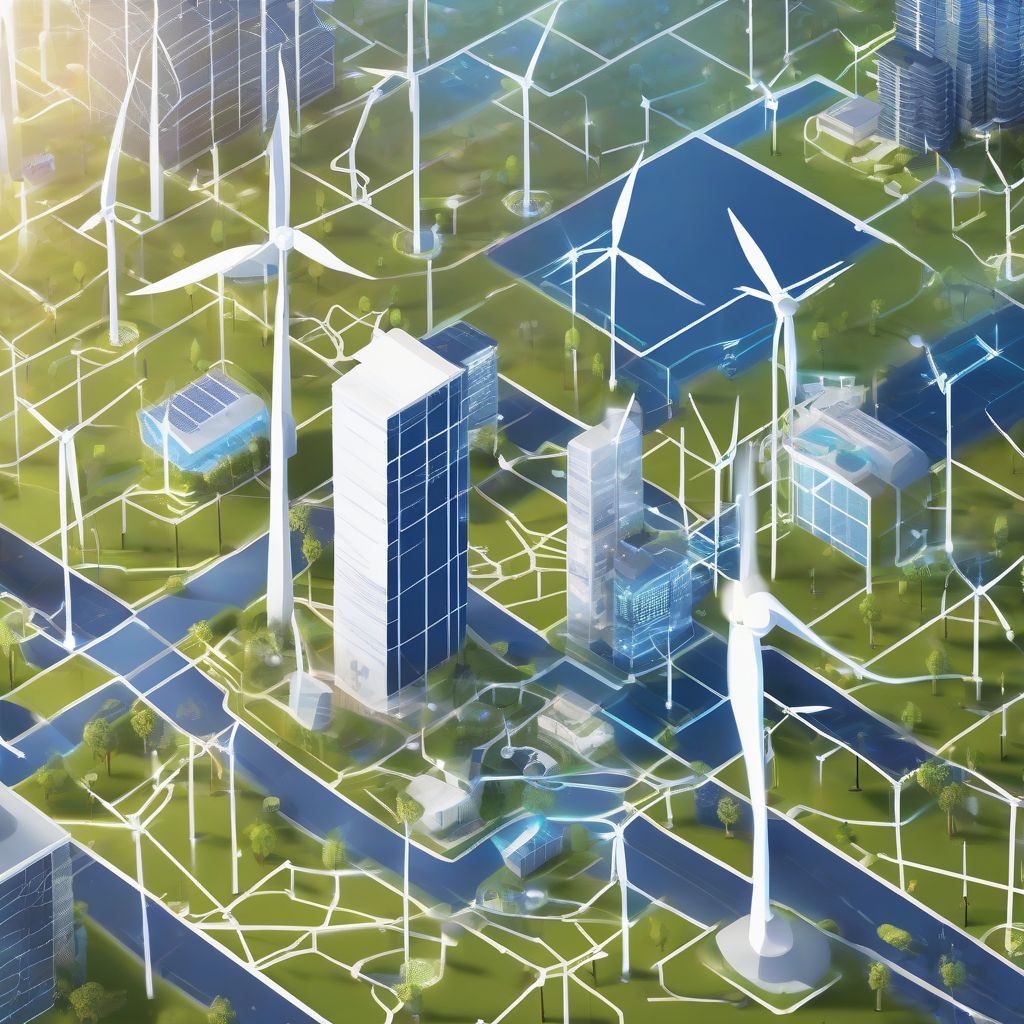Imagine a world where energy is clean, abundant, and intelligently managed. This isn’t a futuristic dream but a rapidly approaching reality thanks to the powerful synergy of Artificial Intelligence (AI) and the Internet of Things (IoT) in revolutionizing sustainable energy solutions. From optimizing energy consumption in our homes to transforming entire power grids, AI and IoT are paving the way for a greener, more sustainable future.
Understanding the Power Duo: AI and IoT
Before diving into the specifics, let’s clarify what AI and IoT are and how they contribute to sustainable energy. IoT refers to the network of interconnected devices, sensors, and software that collect and exchange data. Think smart thermostats, solar panels with performance monitors, and even electric vehicle charging stations that communicate with the grid. AI, on the other hand, empowers these devices with the ability to learn, reason, and make decisions without human intervention. AI algorithms can analyze the massive amounts of data generated by IoT devices to identify patterns, predict trends, and optimize energy usage in real-time.
Enhancing Renewable Energy Generation
One of the most significant contributions of AI and IoT is in optimizing renewable energy generation. Solar and wind power, while clean and sustainable, are inherently intermittent. AI algorithms, fed by real-time weather data from IoT sensors, can accurately predict energy generation, allowing grid operators to balance supply and demand effectively. This reduces reliance on fossil fuel backup plants and ensures a stable energy supply. “Imagine AI as the conductor of an orchestra,” says Dr. Emily Carter, a leading energy researcher, “harmonizing the various instruments – solar panels, wind turbines, and energy storage – to create a symphony of clean energy.”
Optimizing Solar Panel Performance
IoT sensors on solar panels monitor their performance, detecting issues like shading or malfunctioning components. AI algorithms then analyze this data to diagnose problems and recommend maintenance, maximizing energy output and extending the lifespan of the panels.
Predicting Wind Energy Output
AI-powered forecasting models, using data from weather sensors and wind turbine performance data, can predict wind energy output with remarkable accuracy. This allows for better integration of wind power into the grid and reduces the need for costly energy storage solutions.
Revolutionizing Energy Consumption
Beyond generation, AI and IoT are transforming how we consume energy. Smart homes, equipped with IoT devices like smart thermostats and appliances, can learn our energy usage patterns and automatically adjust settings to minimize waste. “It’s like having an energy butler,” quips a satisfied smart homeowner, “silently managing my energy use without me even lifting a finger.”
Smart Homes and Energy Efficiency
AI-powered smart home systems can optimize energy consumption by automatically adjusting lighting, heating, and cooling based on occupancy, weather conditions, and energy prices. They can even learn your preferences and adapt to your lifestyle.
Smart Grid Management
AI and IoT are playing a pivotal role in modernizing the power grid. Smart grids, equipped with sensors and intelligent controls, can optimize energy distribution, detect faults, and automatically reroute power during outages, improving grid resilience and reliability.
Addressing User Queries and Concerns
As with any emerging technology, people have questions and concerns about the role of AI and IoT in sustainable energy solutions. Here are some common queries:
Data Privacy and Security
One concern is the security of the vast amounts of data collected by IoT devices. Robust security measures, including encryption and access controls, are essential to protect sensitive energy usage data from unauthorized access.
Cost of Implementation
The initial investment in AI and IoT technologies can be significant. However, the long-term benefits, including reduced energy costs and improved grid efficiency, often outweigh the initial expenses.
Reliability and Dependence
Concerns about the reliability of AI and IoT systems are also valid. However, continuous advancements in these technologies are improving their robustness and resilience.
 AI and IoT for Sustainable Energy
AI and IoT for Sustainable Energy
Driving a Sustainable Future
The convergence of AI and IoT is driving a paradigm shift in the energy sector, accelerating the transition towards a sustainable future. By optimizing renewable energy generation, enhancing energy efficiency, and modernizing the power grid, these technologies are empowering us to build a cleaner, more sustainable world for generations to come.
Conclusion
The integration of AI and IoT in sustainable energy solutions is not just a trend, but a necessary step towards a greener future. From optimizing renewable energy generation to revolutionizing energy consumption in our homes, the benefits are undeniable. While challenges like data security and implementation costs need to be addressed, the long-term advantages of increased efficiency, reduced reliance on fossil fuels, and a more resilient energy infrastructure far outweigh the concerns.
We encourage you to share your thoughts and experiences with AI and IoT in the comments below. Have you implemented any smart energy solutions in your home or workplace? What are your predictions for the future of sustainable energy? Let’s continue the conversation and work together towards a brighter, more sustainable tomorrow. You can also explore related articles on the future of zero-energy buildings and smart grids, and how bioplastics and green materials are changing industries to learn more.



